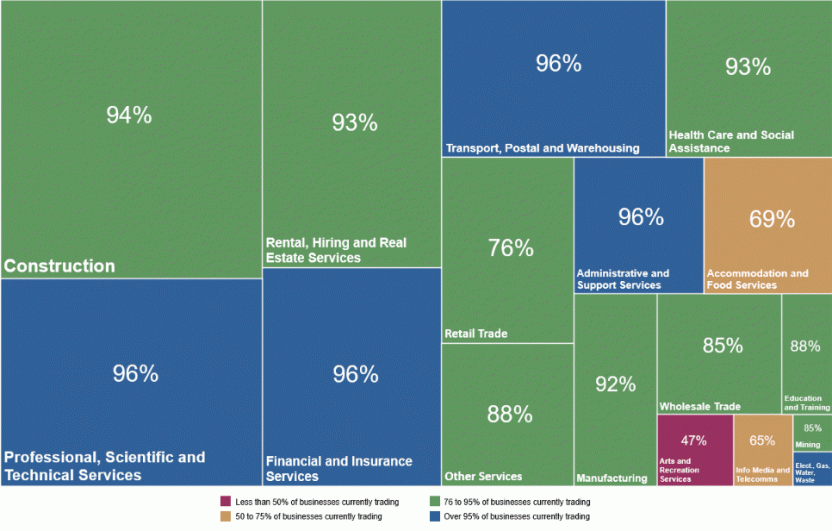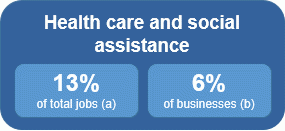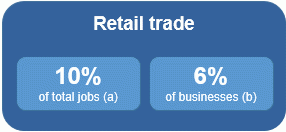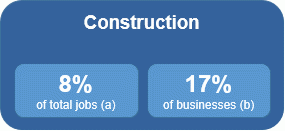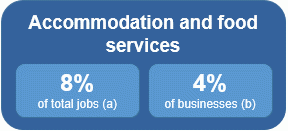This publication provides information on the incidence and nature of impacts due to COVID-19, as experienced by businesses operating in Australia. This is the second release of data from the survey. Results from the first survey were published on 26 March 2020.
Topics covered in this survey are:
- Trading status of businesses;
- Impacts on the workforce of businesses;
- Operational impacts;
- Management responses and strategies.
The period of collection of data for this survey, from 30 March to 3 April, immediately followed the Australian Government’s announcements of further social distancing restrictions and additional business support measures on 29 March 2020.
This release forms part of the suite of additional products that the ABS is producing to measure the economic impact of the COVID-19 coronavirus. The ABS is committed to future collection of data to measure the business impacts of COVID-19 and proposes to release this information at least once a month. Future information collected will evolve to maintain relevance in a changing environment.
